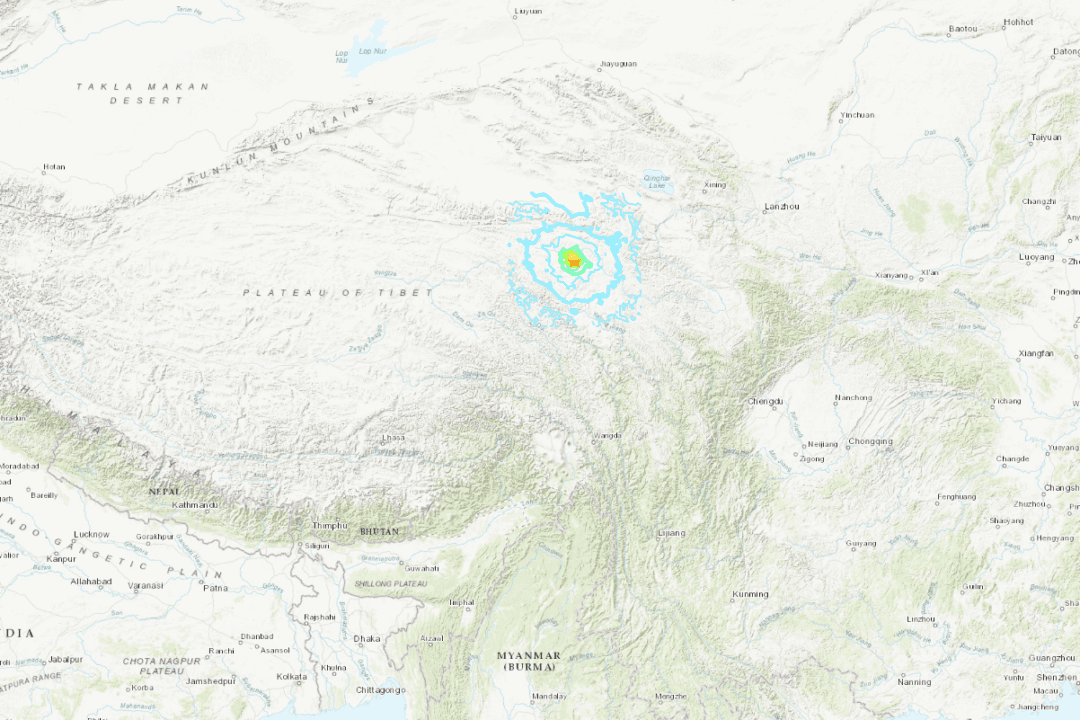A moderately strong earthquake struck the northwestern Chinese region of Qinghai on Jan. 8, as rescue workers continued their search for survivors from a deadly quake that hit neighboring Tibet just a day earlier.
The latest quake, which registered a magnitude of 5.5, occurred at 3:44 p.m. local time, with a depth of 14 kilometers (8.7 miles), according to the China Earthquake Networks Center (CENC). The United States Geological Survey (USGS) put it at a slightly stronger magnitude of 5.7 with a depth of 10 kilometers (6.2 miles).




